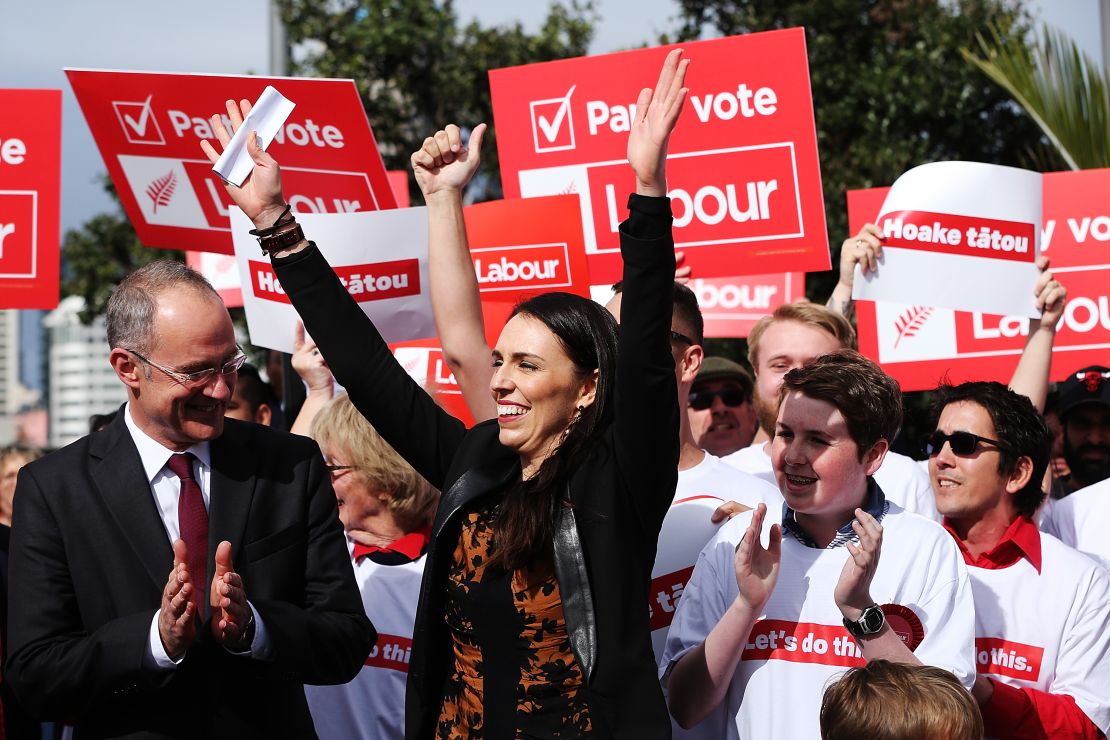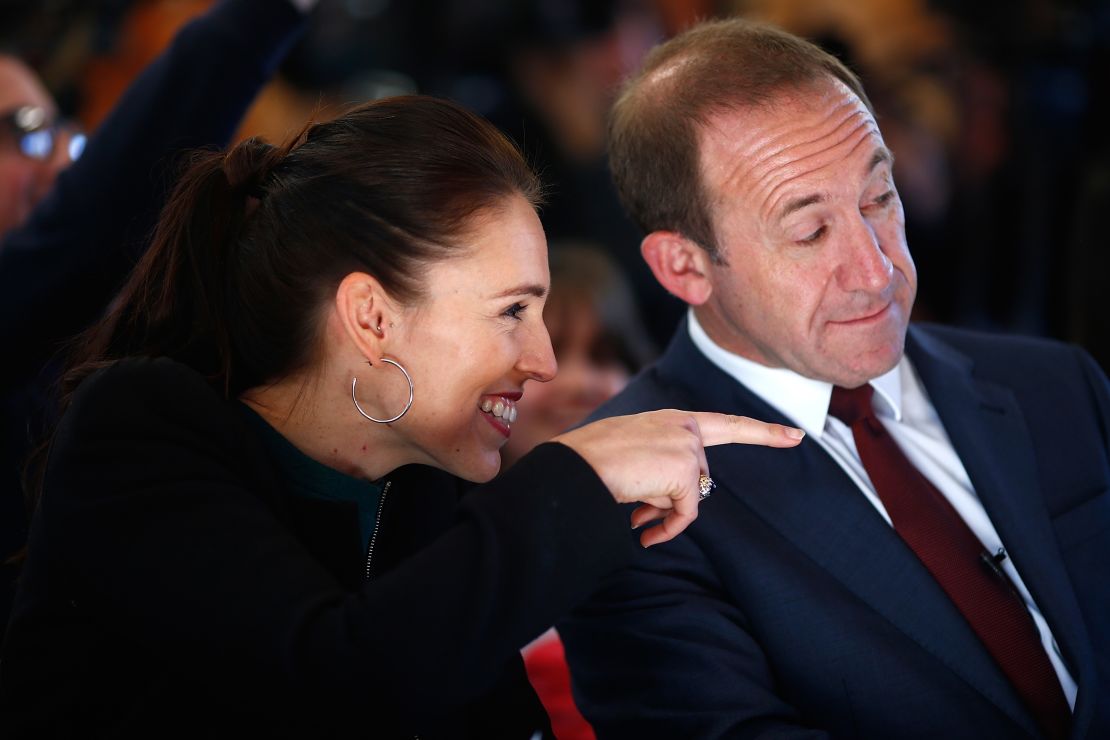Story highlights
Jacinda Ardern will be New Zealand's third female prime minister
Her party surged in the polls after she became leader, winning enough votes to form a minority coalition
Jacinda Ardern found out she would be New Zealand’s next Prime Minister watching TV.
The Labour leader was on tenterhooks Thursday along with the rest of the country as NZ First leader Winston Peters revealed whether he would back her party or the incumbent Nationals.
“I enjoyed the theater of it,” she said following Peters’ announcement. “I joined with New Zealand as we learned the news together.”
Peters said he thought the public deserved to know first, adding a final twist to an election campaign already rife with drama.
The 37-year-old Ardern took over Labour after then leader Andrew Little stepped aside at the start of the election campaign, when the party was struggling in the polls.
“Jacindamania” saw a surge in support for Ardern’s party, particularly among young people, eventually gaining them just shy of 37% of the vote, enough to form a government with the support of NZ First and the Green Party.
When she is sworn in, Ardern looks set to be the world’s youngest serving female leader but she’s not New Zealand’s first woman in the top job – Jenny Shipley and Helen Clark also served as prime ministers in the 1990s and 2000s.
She replaces National’s Bill English, who was in power for less than 12 months, after the resignation of former Prime Minister John Key last December.

Rising star
A member of the Labour Party since she was 17 years old, Ardern has been an opposition member of parliament (MP) since 2008.
When she was first elected, Ardern was the country’s youngest sitting MP, and rose quickly through the party, becoming deputy leader in March this year.
In a February by election, she was returned by a landslide, taking over 75% of the vote in Mt Albert, a Labour heartland in the capital of Auckland.
“If at any given time 50% of the room isn’t disagreeing with you, you’re probably not saying anything,” Ardern told CNN affiliate Radio NZ earlier this year.
A former DJ and lapsed Mormon, Ardern is the closest thing New Zealand has had to a rockstar politician in years, attracting mass rallies and wall-to-wall press coverage.
While New Zealand has a parliamentary system – where the prime minister is the leader of the governing party – this election has been more presidential than ever, focusing on Ardern and English’s personalities.
Not all that attention has been welcome, in her early days as leader, Ardern struck out against the media for focusing on her looks and questioning her about her ability to juggle the job with any potential future children – which many commentators said was a sexist double standard that would not be applied to men.

‘Jacindamania’
While Ardern was a known and popular figure in New Zealand politics, her success as Labour leader nevertheless took many observers by surprise.
When she took over as leader, Labour was trailing National in the polls, and there was little chance of it forming a government.
From August however, the party started to be seen a real contender in the race for leadership, a view that helped propel Ardern’s popularity even further, Grant Duncan, an expert on New Zealand politics at Massey University, told CNN ahead of the September election.
While there may have been an underlying desire for change from the three-term National government, the only likely alternative under Ardern’s predecessor Little was an unsteady coalition of Labour, Greens and New Zealand First, he said.
With her growing popularity, “suddenly an alternative Labour-led government really (was) looking viable.”
Ironically however, Ardern will head just the coalition that some voters thought untenable under Little. The Greens are expected to support a minority Labour-NZ First government, setting the stage for tense negotiations on nearly every policy ministers attempt to pass.




